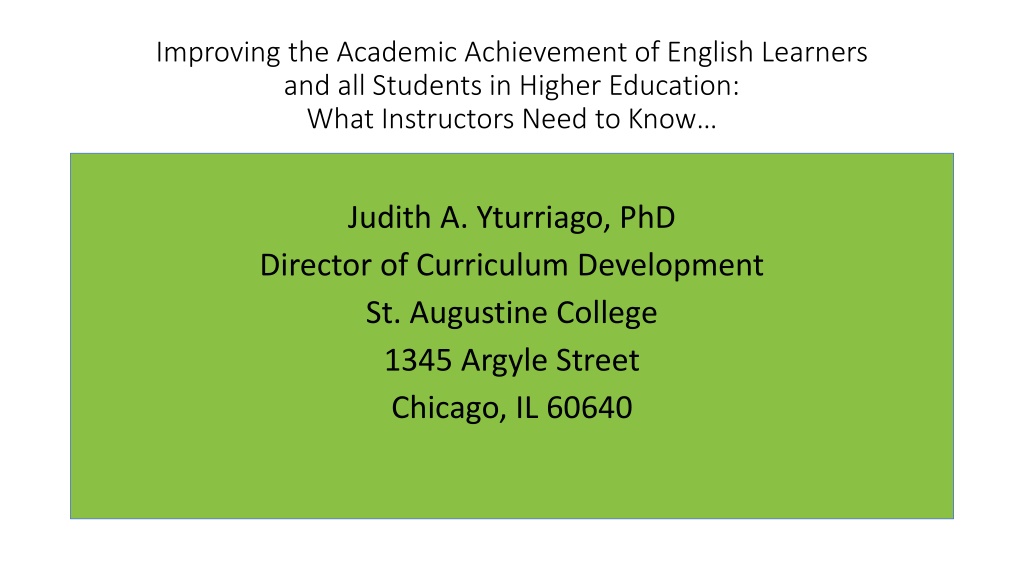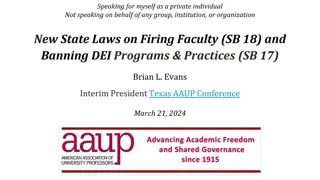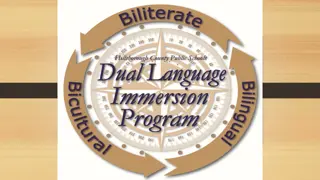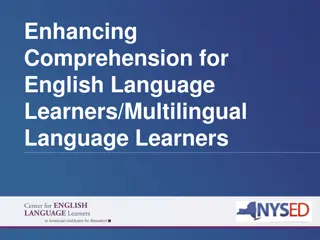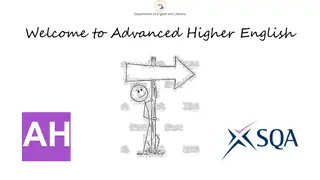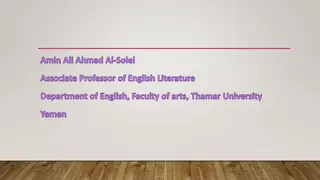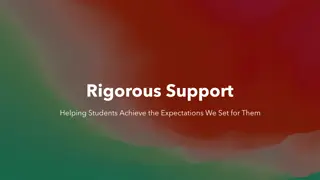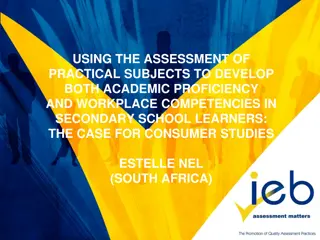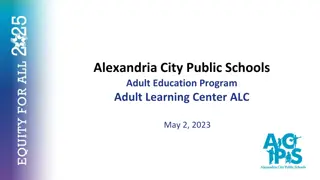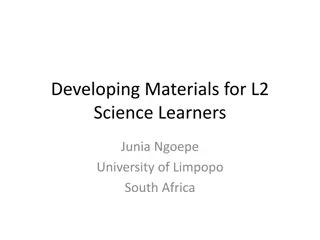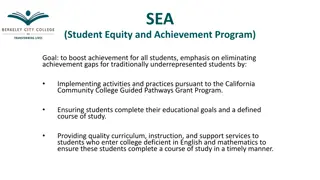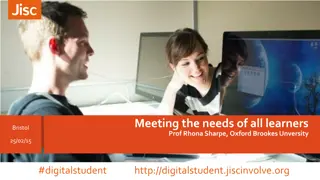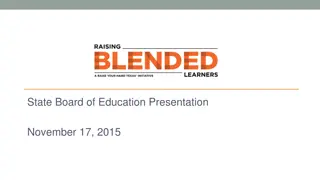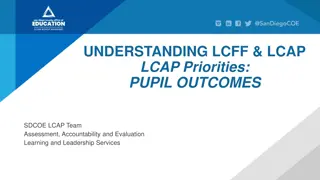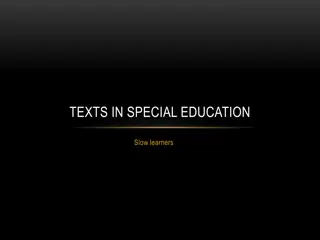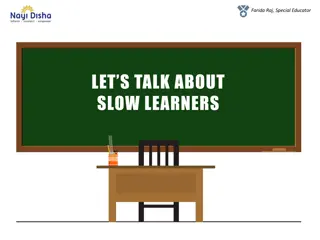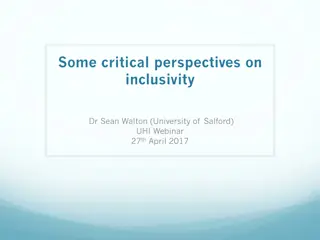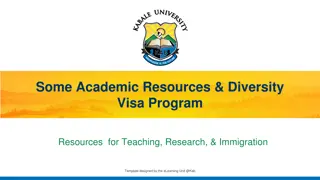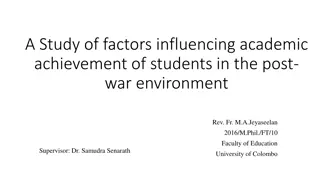Enhancing Academic Achievement of English Learners in Higher Education
Explore strategies for instructors to improve the academic performance of English learners in higher education. Topics cover different types of English learners, bilingualism, social vs academic language, effective teaching practices, and the importance of emotional support in language learning motivation.
Download Presentation

Please find below an Image/Link to download the presentation.
The content on the website is provided AS IS for your information and personal use only. It may not be sold, licensed, or shared on other websites without obtaining consent from the author. Download presentation by click this link. If you encounter any issues during the download, it is possible that the publisher has removed the file from their server.
E N D
Presentation Transcript
Improving the Academic Achievement of English Learners and all Students in Higher Education: What Instructors Need to Know Judith A. Yturriago, PhD Director of Curriculum Development St. Augustine College 1345 Argyle Street Chicago, IL 60640
Three Types of English Learners Formal Schooling Limited-Formal Schooling Long-Term 2
Subtractive verses Additive bilingualism An additive bilingual living in the US maintains and develops his or her home language and can comprehend, speak, read and write in both his or her home language and in academic English. Ideally, additive bilingualism is a goal for all Pre-K through 12 schools and higher education institutions. A subtractive bilingual living in the US gradually loses proficiency his or her home language and becomes more proficient in English. Subtractive bilinguals usually retain some spoken, social home language but cannot read or write in the home language. They usually can read and write in English.
SOCIAL LANGUAGE ACADEMIC LANGUAGE
Social vs. Academic Language When someone is learning another language, the ability to function linguistically in the new language using basic interpersonal communication skills (BICS) takes between 1, 2, or 3 years +++++++++++++++++++++++++++++++++++++++++++++++++++++++++++++++++++++++++++++++++++++++++ When someone is learning another language, the ability to function linguistically with cognitive (thinking), academic (reading & writing), language proficiency (CALP) takes between 5 to 7 to 9 years +++++++++++++++++++++++++++++++++++++++++++++++++++++++++++++++++++++++++++++++++++++++++ Social language is the tip of the language iceberg . Academic language proficient is always the goal
Effective Instructors/Professors Effective Instructors/Professors Can differentiate instruction for all academic levels of students. Can design courses with a lot of academic student interaction Can provide comprehensible input for all students Can get students to think critically
Affective Emotional Suppor Affective Emotional Support The greatest motivation for students to learn another language is the desire to live, work, & interact in fellowship with those who speak that language. ESL in US schools & colleges has historically been English only & focused on assimilation which we now know can be denigrating to the self esteem & cultural heritage of the ESL student. Valued native language and culture Anxiety-free learning situation Advocacy for rights Opportunities for success 7
Cognitive Support in Any Language is Instruction is comprehensible for all students Learning goals are content areas standards All teaching and learning benefits all students The focus is on higher-level thinking skills 8
Adapted instructional/learning strategies Teach the text backwards Teach the content, vocabulary, and cognate* lists for the course text or written materials using visuals, videos, audio recordings, role playing, small group discussions, etc. Then assign the students to read that text or written materials outside of class and to create critical/key questions that can be used in groups or for a quiz or exam. *Cognates are words that are the same or similar in two languages, i.e. important/importante; capital/capital; hospital/hospital; animal/animal, etc
Adapted teaching/learning strategies At the beginning of class, always share the objectives of the lesson with students. Use a lot of visual and audio lesson enhancements: YouTube videos, graphic organizers, i.e. Venn diagrams, PowerPoints, Prezi, etc. Teach students to use the 6 building blocks of academic comprehension : 1. Share/discuss explanations and lists of cognates, 2. Share/discuss interpretations, 3. Share/discuss applications, 4. Share/discuss critical perspectives, 5. Empathize/discuss different perspectives/comprehension, 6. Share/discuss self-knowledge about how to learn.
Teach students these critical thinking skills through a variety of assignments/tasks Compare and contrast Gathering data Analyzing data Identify sequences State hypotheses Make inferences Develop questions Identify points of view Make predictions Summarize data Categorize Classify items Sequence Develop criteria Making a decision Evaluate solutions Chart items Follow instructions Identify items Determine authenticity Make observations Draw conclusions Identify trends Determine bias
Differentiation Strategies Webquests Telecollaborative Research Opportunities Graphic Organizers Assessments (Scholarly Levels) Primary Sources (Document-Based Questions) Performance Tasks Student Research
Make Texts and Assignments More Appropriate for Language Proficiency and Reading Levels Ways instructors can make texts/materials more comprehensible for students: Use graphic organizers for key vocabulary, cognate lists, etc. Use the table of contents/glossary, etc. as graphic organizers. Have students in pairs summarize and/or rewrite difficult sections of the text/materials. Use student or instructor audio recordings of sections of text accompanied with explanations. Use demonstrations, role playing, debates. Use alternative texts/materials in native languages. 13
Grouping for Differentiated Assistance Based on Student Need Independent cooperative groups of selected students Tutor small group support Instructor- directed small-group instruction Pairing students for peer assistance/ tutoring 14
